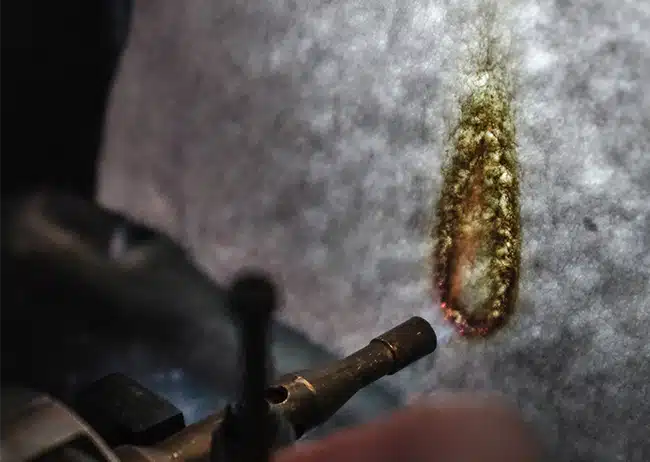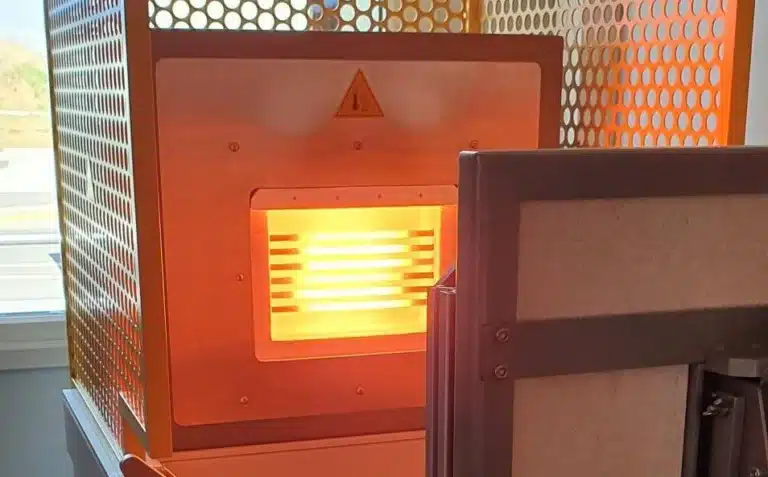This standard defines requirements for protecting firefighters during firefighting operations and associated activities, such as disaster rescue and response.
Risks from heat and flames are divided into two levels. Duflot® targets level 2, which guarantees superior heat protection performances. The only differences between level 1 and 2 clothing involve requirements relating to heat and flames.

Our far-reaching lab work and extensive testing simplify your certification procedures, by saving time and improving reliability.

All materials in the structure of the clothing must be tested for limited flame spread and achieve index 3.
This test defines a material’s performance level depending on the after-flame time (≤ 2 seconds for index 3) and after-glow time (≤ 2 seconds for index 3).
Test performed in our laboratory.
The bottom layer of the product is exposed to a flame of 80 KW/m². The objective of this test is to determine the time taken for the temperature of the top layer of the product to rise to 24°C.
For level 2, the convective heat transfer index (HTI 24 (s)) must be over 13 seconds. The difference in time required to rise from 12°C to 24°C (delta between HTI 12 (s) and HTI 24 (s)) must be over 4 seconds.

This test must be performed on the full garment assembly. It is used to evaluate the resistance of protective equipment when exposed to a source of intense radiant heat of 40kW/m².
For level 2 (enhanced thermal protection required for high-risk activities, such as firefighting in structures, targeted by Duflot®), the radiant heat transfer index (RHTI 24 (s)) must be over 18 seconds. It corresponds to the time taken for the temperature to rise by 24°C.
The difference in time required to rise from 12°C to 24°C (delta between RHTI 12 (s) and RHTI 24 (s)) must be over 4 seconds. This corresponds to the reaction time of the wearer.
Test performed in our laboratory.
This test is used to evaluate the breathability of the material. The lower the resistance of the fabric, the more breathable it is. This means that the product allows moisture to escape and prevents the wearer from being burned by their own sweat. For level 2, resistance to evaporative heat loss must be 30m²Pa/W or less.
2022 ©Duflot industrie – All rights reserved I Legal notices I Conditions of use I Personal data I Created by: VANO créations